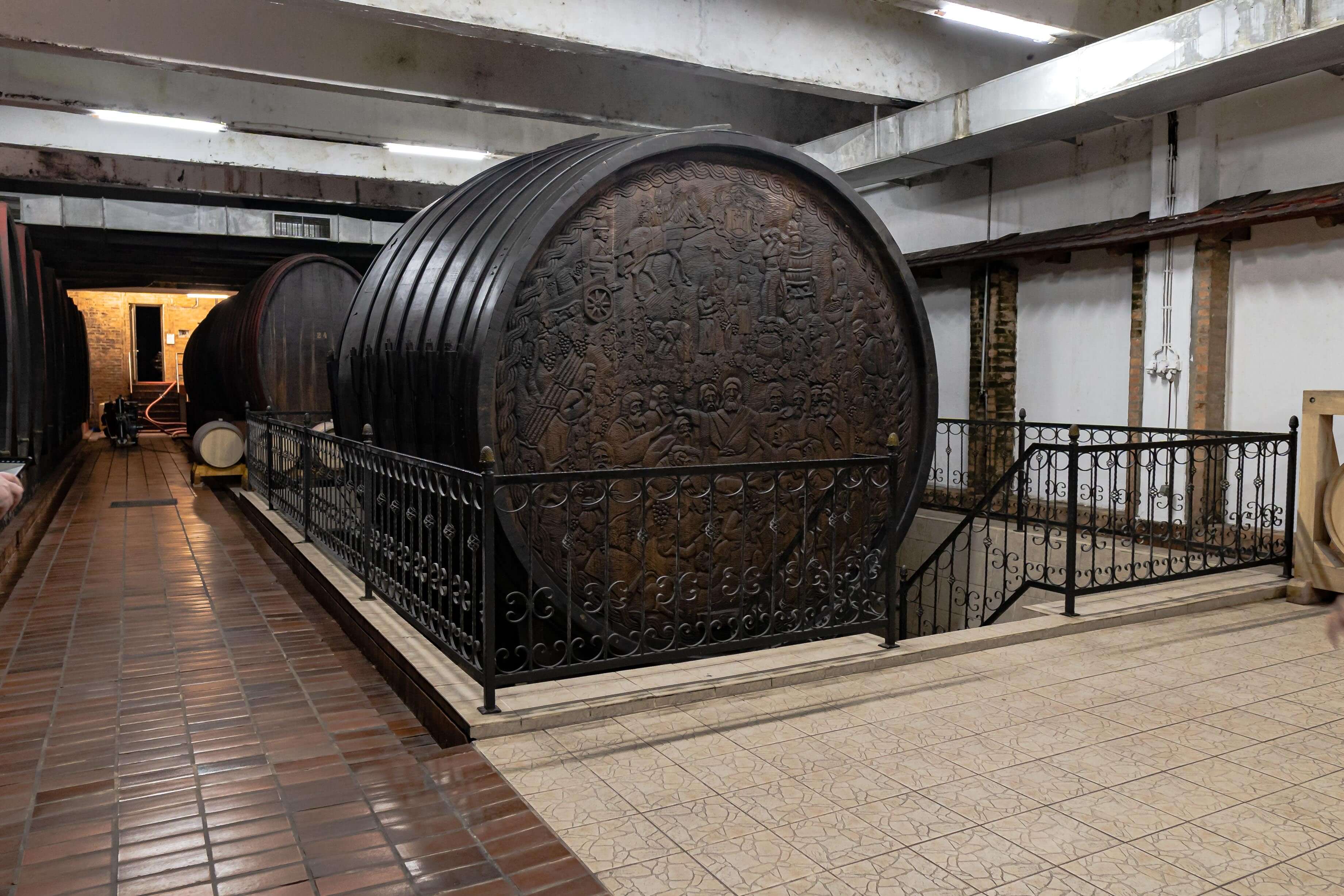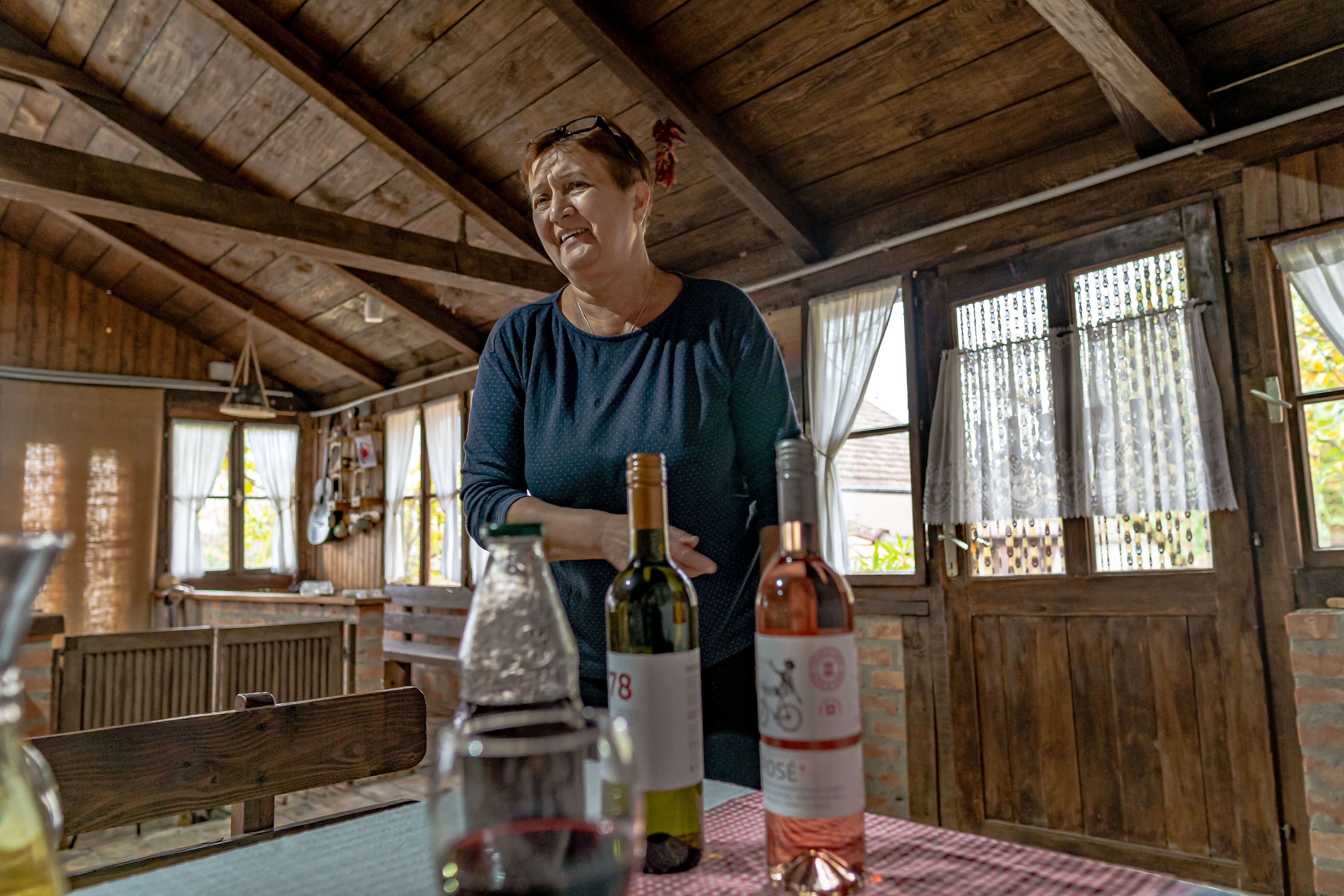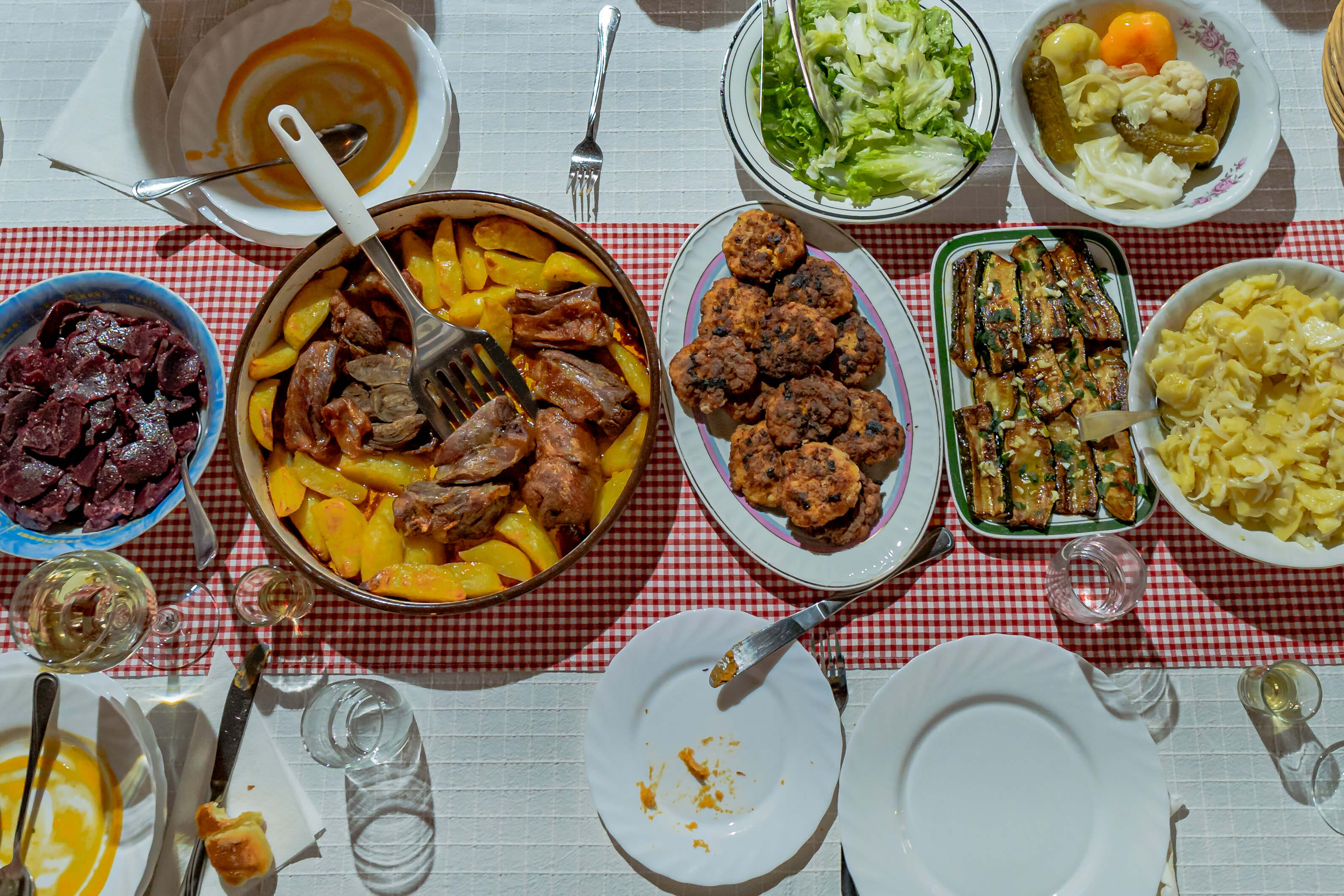Discover the Croatian Danube: Synergy Between People and Grapes in Erdut
September 7, 2022 – Picture this. You took a weekend off and spent it in nature, fishing, camping by the Danube, and eating delicious fish stew. It would be silly to stop there, wouldn’t it? Nothing better to round it all up than more homemade food and outstanding wine. Balance it out with some physical activity. Head east from Aljmaš, follow the 11-kilometre-long promenade and you will arrive in Erdut. Located 37 kilometres from Osijek, you might have heard of it in the context of the Erdut Peace Agreement of 1995, otherwise an unknown place. If you just scratch the surface, though, you will discover a lot. We’ll start you off by telling you about its mystery, wine, and its people.
Historically, Erdut has been a calm small town where cultures intertwined. It was first mentioned in 1335 as Erdöd, and with the status of a town in 1472 as Castellum Erdeed. The name originates from a Hungarian word denoting a forest path or road. From the 15th century until World War II, it was passed from hand to hand between noble families. Among them were the Adamović Cseh family, whose 19th-century manor still stands in the centre of town. The manor is not the only piece of architecture worth visiting.
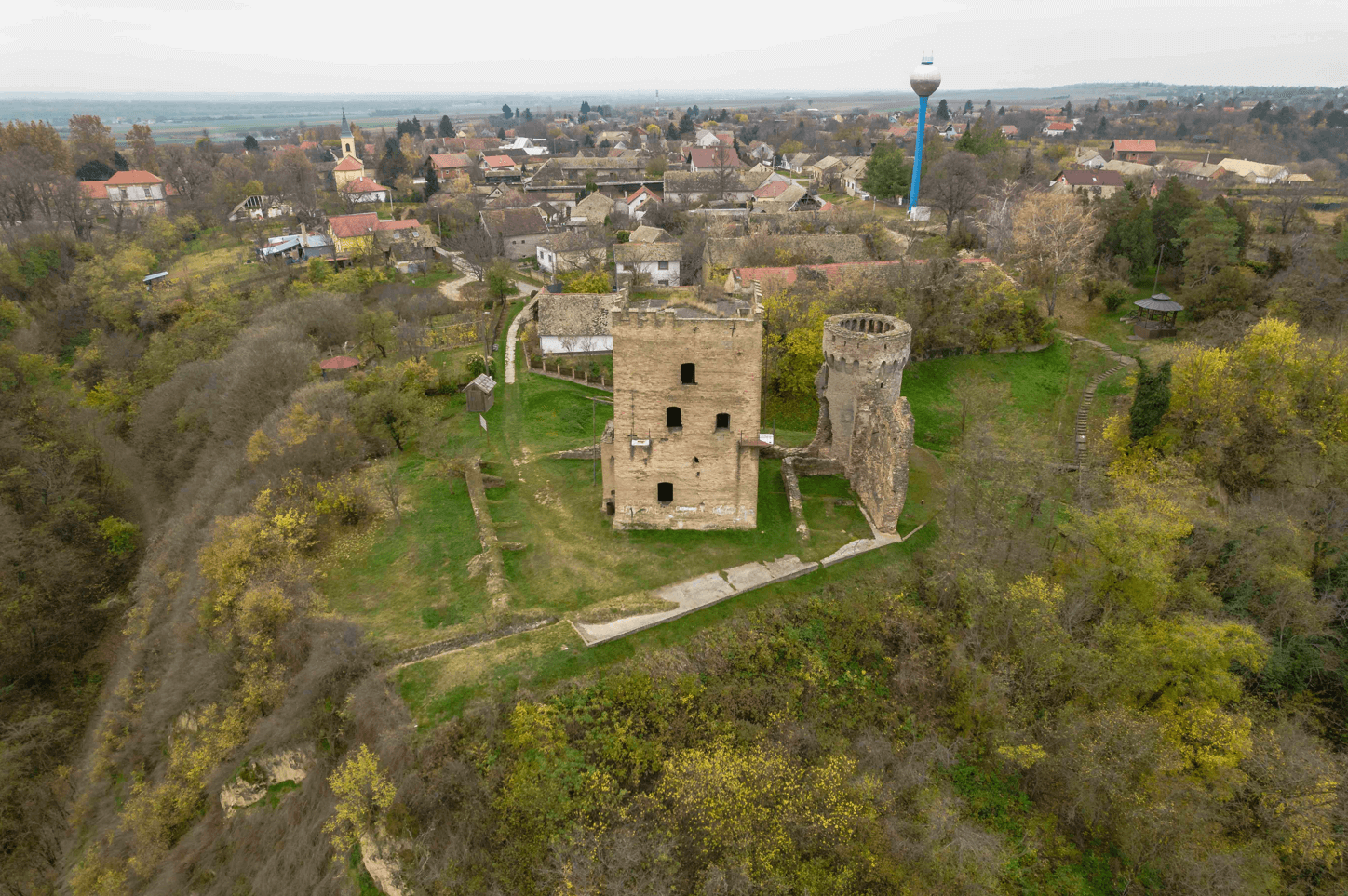
A mysterious medieval-looking castle stands on the bank of the Danube. There is no written information on its origins, but there are a few legends surrounding it. Each generation probably comes up with its own stories. Nada Bućkalović wrote about one of them where fairies would keep destroying at night whatever the builders would build during the day. To get them to stop doing that, they had to sacrifice a breastfeeding mother by building her into one of the pillars of the castle. According to Nada, the memories of the legend were refreshed when the grave in the basement was robbed. The pillar at the entrance was damaged, revealing a 180 cm tall skeleton, with a 150 cm long braid. Nowadays, the castle is a zero-category monument standing on top of a hill right next to the Danube. Local rock climbing associations like using it for practice, but you don’t have to be an expert to climb up the hill and explore its old walls. The Stairway of Health in the park right next to the castle will also take you up and down for a refreshing walk by the Danube.
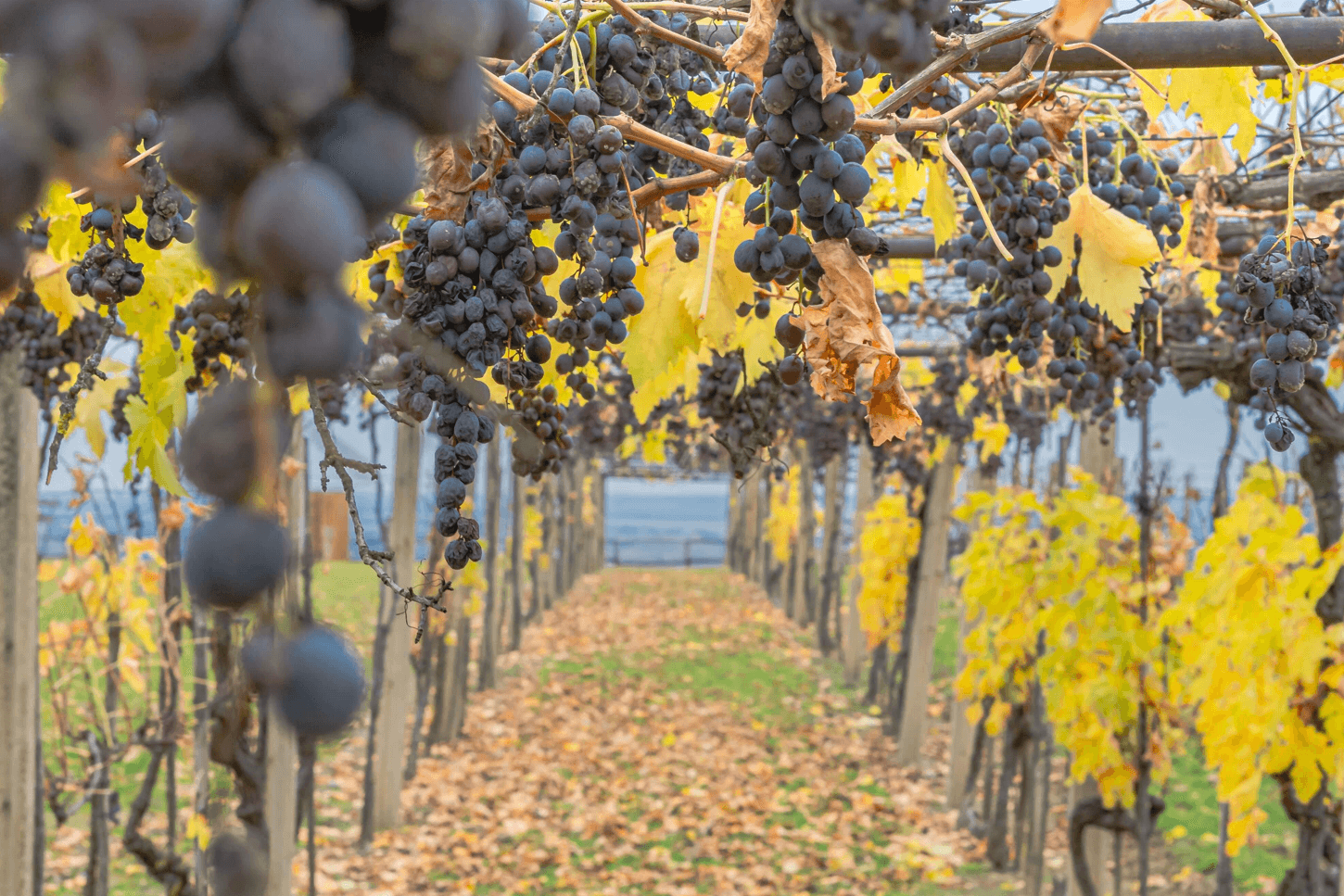
Having touched on movement, this is the perfect opportunity to remind you of Erdut’s traditional Wine & Bike Tour. Usually taking place right in the middle of autumn grape harvests, this event attracts hundreds of visitors each year, all looking for good fun, healthy competition, and, of course, excellent local wine. Thanks to its geographical position, the Erdut municipality is famous for its vineyards, which stretch as far as the eye can see.
Erdut alone is home to multiple wineries, harvesting the famous Traminac, Graševina, Chardonnay, Riesling, etc. Graševina is the trademark wine of Erdut, and there is so much of it there that they had to build the world’s largest barrel to keep it all.
An incredible 2,5 tonnes of iron keeps the wooden construction in place. It has been listed in the Guinness Book of World Records, and it can keep 75 thousand litres of wine, equaling 100 thousand bottles! It was made in 1989 by DIK Đurđenovac, using the traditional method of construction with a total of 109 oak trunks which were by that point over 100 years old. The motifs of the traditional Croatian interlace and the Last Supper were carved by Naïve sculptors Tijardović and Fodor. The barrel has been kept full of Graševina ever since its construction. Not that its integrity is ever to be doubted, but it has been placed over a specially constructed pool that would salvage the gold-coloured nectar of life in case the barrel ever started leaking.
A day of sightseeing, cycling, walking, and wine tasting will surely make you quite hungry. Worry not! Though there is no restaurant in Erdut, the locals will be more than happy to feed you homegrown and homemade local food full of flavour, protein and healthy* fat, vitamins, and all the other nutrients your body and soul might need. One of them is teta Zlatica.
She is the perfect representative of what happens when you’re born and raised in a place like Erdut. Like many others in Slavonia, her family has faced all kinds of adversity during the Homeland war, and was left without a penny or a house. After going off into the world and becoming and successfully running a couple of businesses, her heart eventually took her back to Erdut to rebuild her family home and live off the land on the picturesque hills. She has decided to leave everything else and do what she does best and enjoys the most – open her home, her kitchen, and her heart to the curious wanderers who come to explore and experience Erdut. She is one of the residents in Erdut whose happiness is contagious. They all work together, driving change and inspiring progress. It is this synergy (along with their wine) that we believe will get them far and make you feel right at home.
She runs Etno Kuća Stari Dud, where she provides accommodation and freshly cooked meals. If you visit at the right time, live traditional music nights might spontaneously happen. So far, she has hosted team buildings, theatre groups, and events like birthdays and christenings. If you would like to give her a visit, e-mail This email address is being protected from spambots. You need JavaScript enabled to view it. and we’ll sort you out in no time.
*might not always be extremely healthy
Photos: Steve Tsentserentsky
How good is your knowledge of eastern Croatia? Take the CROMADS test above - how many places do you recognise?
For more, make sure to check out our dedicated Lifestyle section.
Eight Must-Visit Croatian Castles, Fortress, and Citadels
June 23, 2022 - In this small guide to Croatian castles, fortresses, and citadels you will find some of the many walled wonders that you can explore in the country, to add a bit of history to your vacation.
It is well known why Croatia is one of the countries where HBO producers set their sights on adapting the acclaimed and popular Game of Thrones novel. Although Croatia is widely known for its Illyrian and Roman heritage thanks to its palaces and amphitheater, many of its castles and fortresses help to display a more medieval side of the country.
For those who have a particular interest in the feudal and medieval history of Croatia, here we review some of the main Croatian castles, fortresses, and citadels that are worth visiting.
Pula Castle
The Pula Castle is a star-shaped castle with four bastions that was built in 1630 to protect the city and its harbor because of its great significance in maritime trade in the North Adriatic. The Venetians commissioned the building of the Castle to the French military architect Antoine de Ville. This was most probably the site of an earlier fortress dating from the pre-Roman and Roman periods. Today the Castle houses the Historical Museum of Istria.
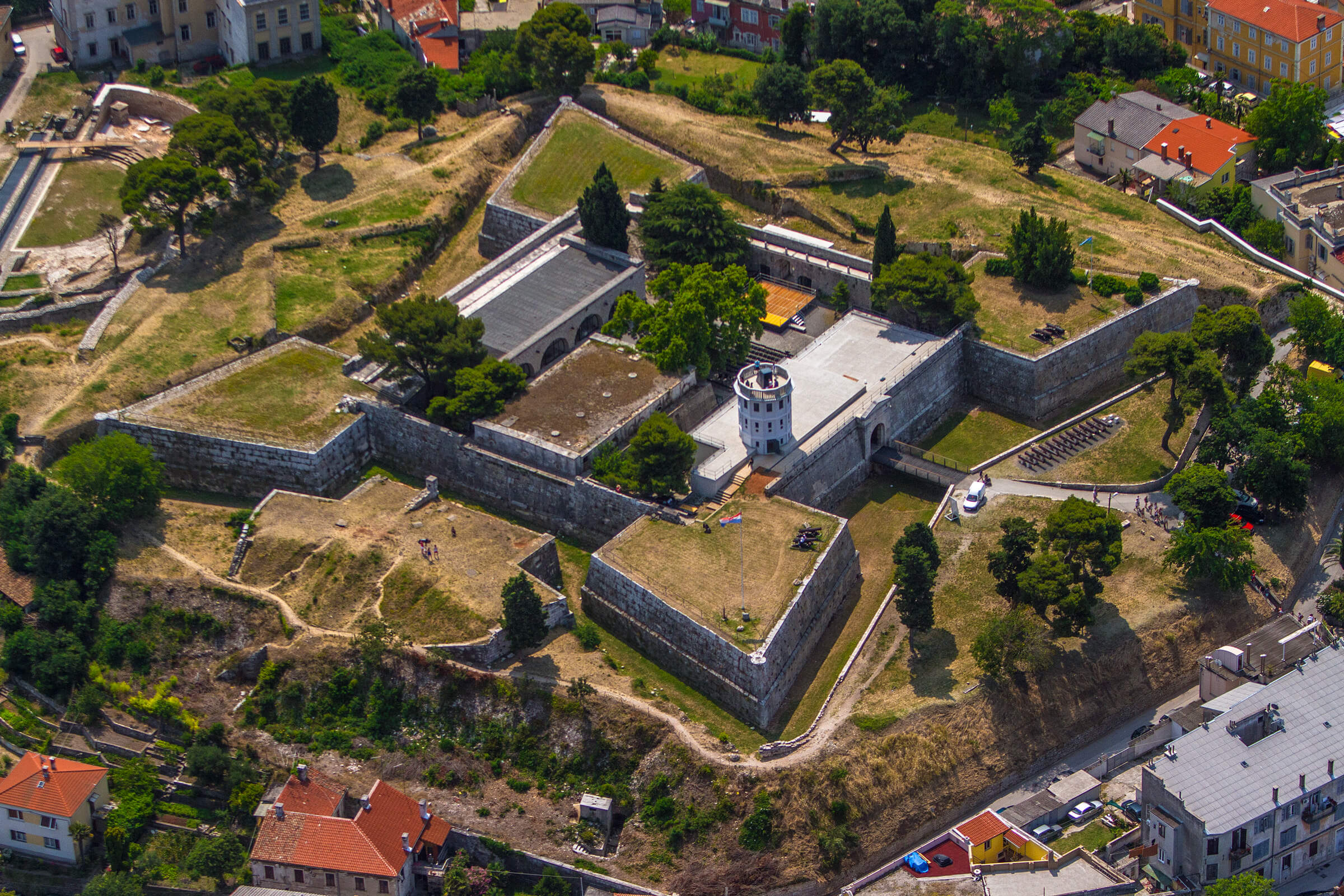
Image: Pula Tourist Board
Trsat Castle
The Trsat Castle served as a lookout on a hill 138 meters above sea level, now overlooking the city of Rijeka. It was mentioned as a parochial center for the first time in 1288. At this same site, there was a Liburnian observation post from prehistoric times, used for monitoring the roads leading from the hinterland to the coast. This location served well for the Romans to establish their defense system, the so-called Liburnian limes, whose starting point was the Tarsatica fortress town, located now in Rijeka's Old Town.
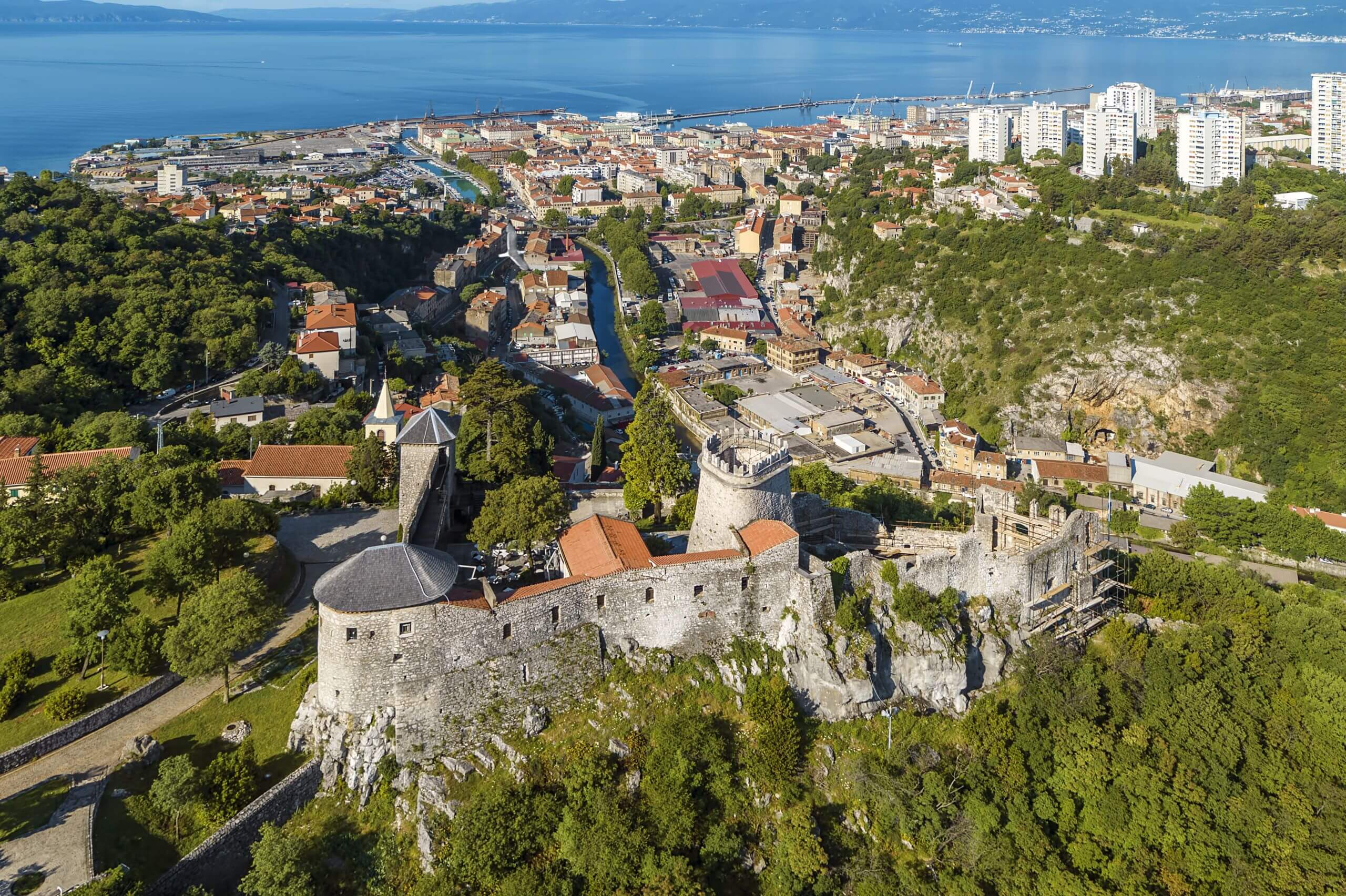
Image: Rijeka Tourist Board
Dubovac Castle in Karlovac
The Dubovac castle is one of the best-preserved and most beautiful monuments of feudal architecture in Croatia. It was built on a hill above the Kupa river and was named after an oak that grows on the surrounding slopes. It changed owners throughout history, changing its appearance depending on current needs and fashion, and got its present appearance after a complete reconstruction in the mid-20th century. It is not known exactly when did construction begin, but books say that it was finished during the 13th century.

Image: Karlovac Tourist Board
Trakošćan Castle
The Trakošćan castle was built at the end of the 13th century in the defense system of northwestern Croatia as a small observation post to monitor the road from Ptuj to the Bednjan valley. According to the legends, the Trakošćan castle got its name from the Thracian fortress, which allegedly existed in ancient times. Another surviving tradition says that it was named after the Drachenstein knights who ruled the area in the early Middle Ages. A museum with a permanent exhibition was founded in 1954.
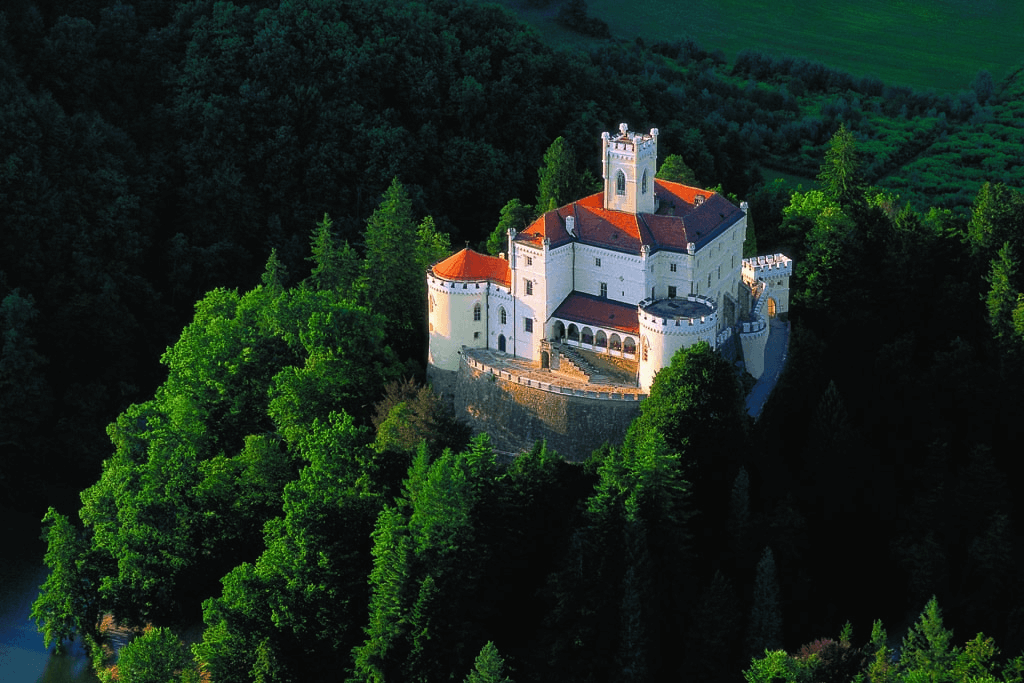
Image: Trakošćan
Varaždin's Old Town
Varaždin’s feudal fortress, known from ancient times as the Old Town, is undoubtedly the most significant historical building in the city. Unlike the royal free city that grew next to and around it, the fort was the heart of the noble estate, which was separate in terms of ownership and law. Disputes between its inhabitants with the citizens of Varaždin were frequent. The fort was built intermittently from the 14th to the 19th century, and its oldest part is the central tower adorned with Gothic benches and canopies, which is a rarity for this type of medieval plastic art in north Croatia.
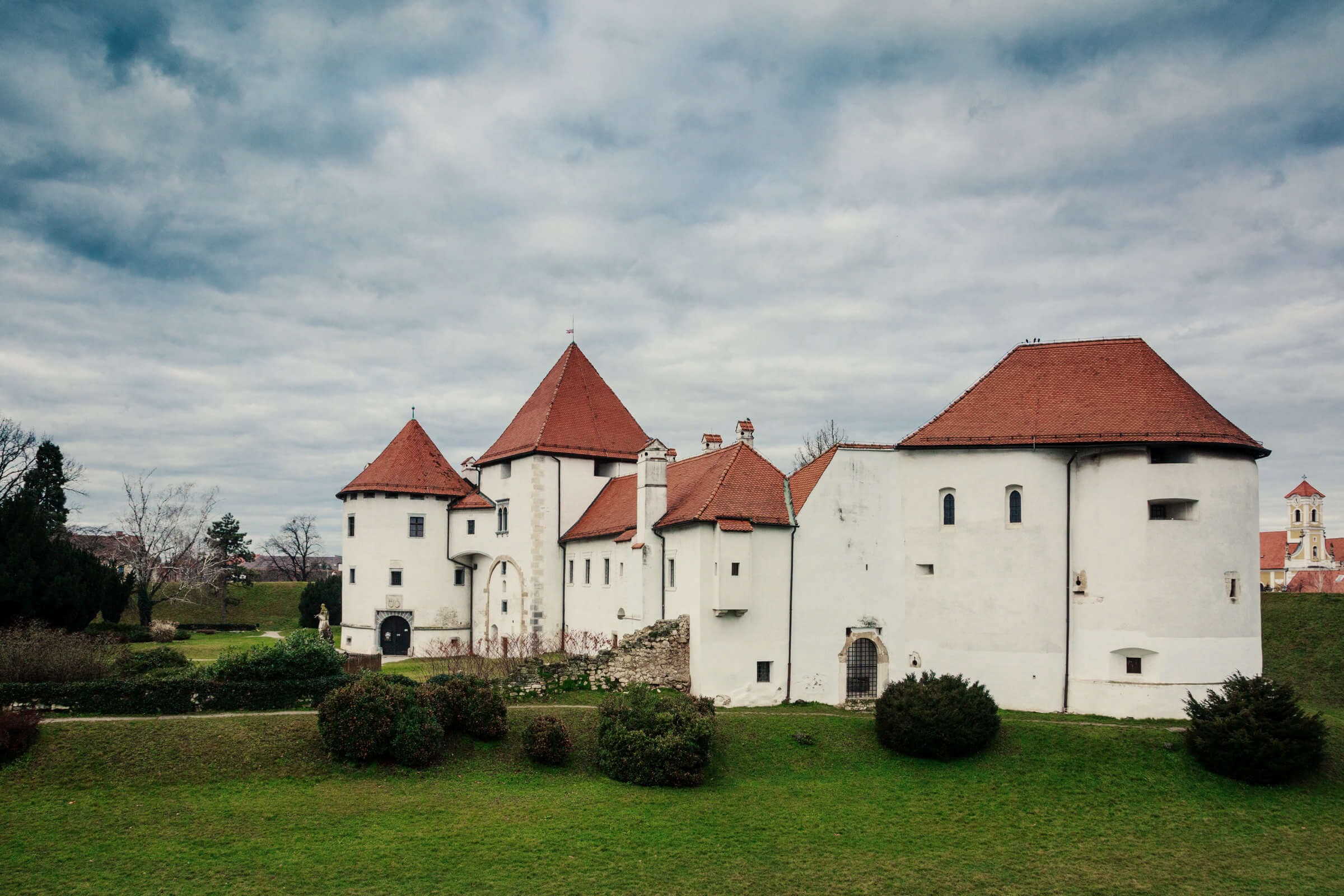
Photo: Mario Romulić
Medvedgrad in Zagreb
At the top of Medvednica, this picturesque medieval castle has been watching over Zagreb for eight centuries. It was built in 1254, after the catastrophic invasion of Tatars who had raided and devastated this area, burning and razing to the ground the two settlements which later became the city of Zagreb: the burgher’s Gradec and the bishop’s Kaptol. Even though magnificently fortified and always ready for battle, Medvedgrad was never attacked. In 2021, Medvedgrad was reopened to the public with a modern and interactive museum inside.
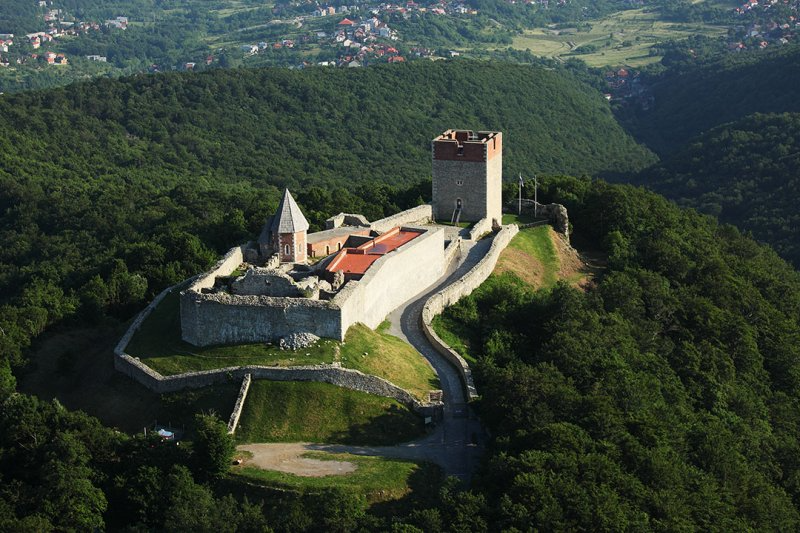
Image: Zagreb Tourist Board
St. Nicholas Fortress in Šibenik
The fortress of St. Nicholas, located at the entrance to the Channel of St. Ante in Šibenik, is a unique Venetian fortification. It was built on the island of Ljuljevac, on the site of the former Benedictine monastery of St. Nicholas, after whom it was named. The construction of the fortress, according to the project of the Venetian architect Gian Girolamo Sanmichelli, began in 1540 after the fall of the city of Skradin under Ottoman rule, when the Venetians had to strengthen the defense of Šibenik, its most important strategic port on the eastern Adriatic coast.

Image: Šibenik Tourist Board
Klis Fortress
Klis fortress was built on an extraordinary strategic location separating the mountains of Mosor and Kozjak that allowed military and commercial control over the whole Klis valley and the area of Salona and Split. Because of its importance, Klis was often referred to as the key to Dalmatia and the heart of the medieval Croatian kingdom. It was built as a small stronghold by the Illyrian tribe Dalmatae, then became a royal castle during feudal and medieval times, and lastly served as a major source of defense against the Ottoman advance.

Image: Jules Verne Times Two/Wikimedia Commons
For more on travel in Croatia, follow TCN's dedicated page.


